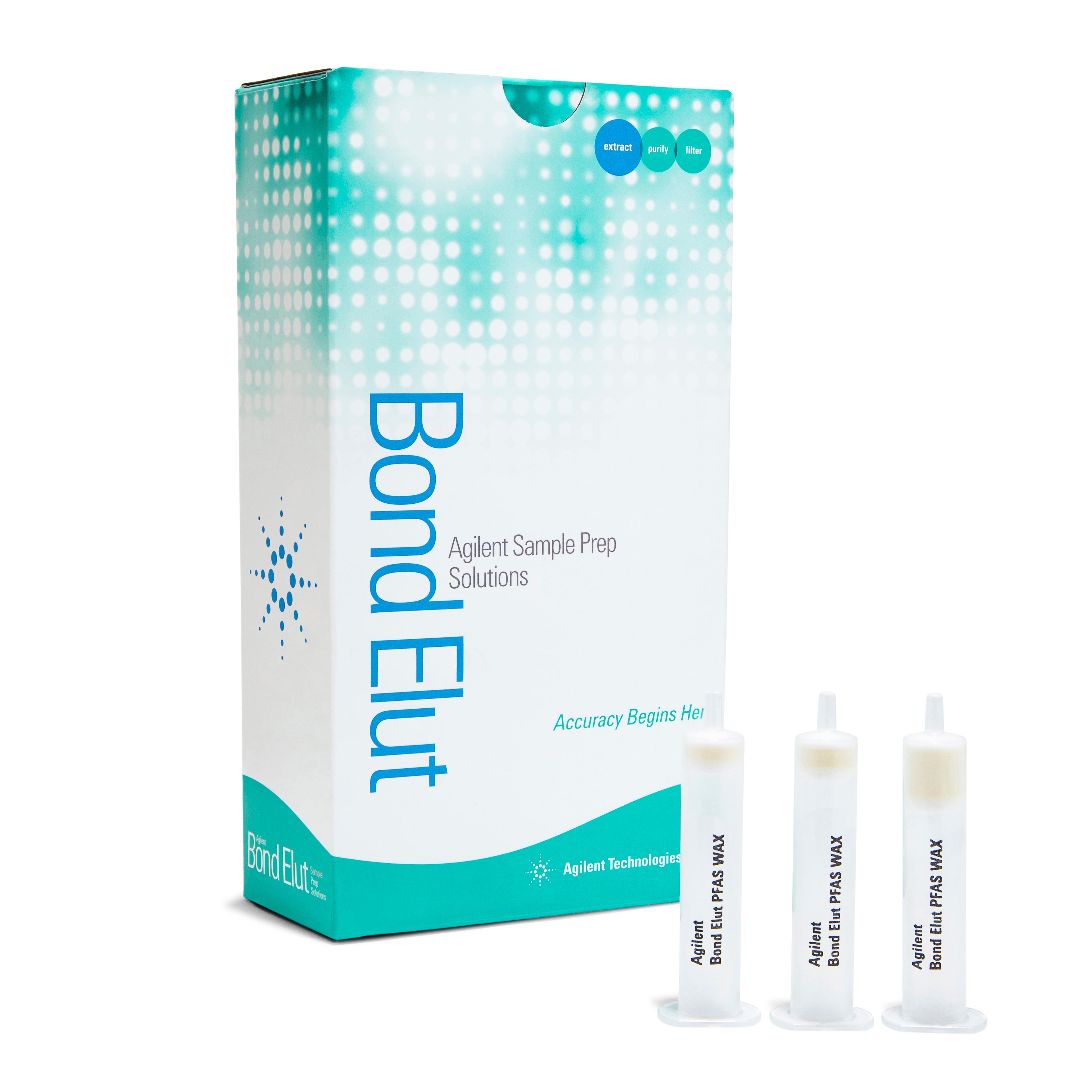Innovations that will revolutionize the future of PFAS analysis
Discover the most groundbreaking recent advancements in PFAS analysis and take a look forward to the developments set to shape the future of the field
2 Oct 2023We have witnessed incredible advances in the field of PFAS analysis, enabling scientists to more effectively detect even trace amounts and improving our ability to mitigate their negative impact.
Per- and polyfluoroalkyl substances (PFAS) are a group of human-made chemicals used in various industrial and consumer applications including cleaning products, personal care products, non-stick cookware, water-resistant fabrics, and fire-fighting foams. They have gained significant attention in recent years due to their global presence in water sources, soil, air, wildlife, and human populations, and potential ecological and health risks. With more evidence about the harmful effects of PFAS continuing to emerge, regulatory agencies and public health organizations have been spurred on to increase monitoring of PFAS contamination.
Here, we explore the most exciting recent developments in the field of PFAS analysis including advancements in analytical techniques using high-tech liquid chromatography-tandem mass spectrometry (LC-MS/MS) technology, robust sample preparation methods, the challenges, best practices, and global implications of PFAS testing and future directions in the field.
Optimize PFAS analysis through efficient sample preparation

Clinical research analysis of PFAS in human serum by LC-MS/MS using Captiva EMR-Lipid cleanup
Efficient sample preparation is essential for clinical laboratories conducting analysis of PFAS in human serum using LC-MS/MS because phospholipids (PPLs), a type of molecule found in serum, can introduce undesired matrix effects. These interferences can lead to inaccurate measurements and affect the sensitivity and specificity of the analysis. By implementing appropriate sample preparation steps to remove or minimize the presence of phospholipids, research laboratories can improve the reliability and accuracy of their studies.
Watch this webinar to learn how to conduct effective serum sample preparation and LC-MS/MS analysis of PFAS using protein precipitation followed by PPL removal with the Captiva EMR-Lipid cartridges from Agilent Technologies. Plus, read the highlights from the Q&A discussion.

Comparison of PFAS recoveries between cartridge format WAX/GCB vs dispersive GCB
PFAS pose significant environmental concerns due to their toxicity, widespread dispersion, and persistence, which has disastrous negative impacts on aquatic ecosystems. To accurately monitor and assess the presence and levels of PFASs in environmental water samples, robust and precise sample preparation techniques are crucial to minimize interferences from other compounds and ensure that the measured concentrations reflect the true levels of PFAS contamination. This involves extracting and purifying target analytes from complex environmental matrices, which can be challenging because PFAS are often in low concentrations and present in complex sample matrices.
Watch this webinar to discover how to reduce sample handling and sample preparation time for non-drinking water PFAS analysis. Plus, read the highlights from the Q&A session.
The challenges and best practices of PFAS analysis
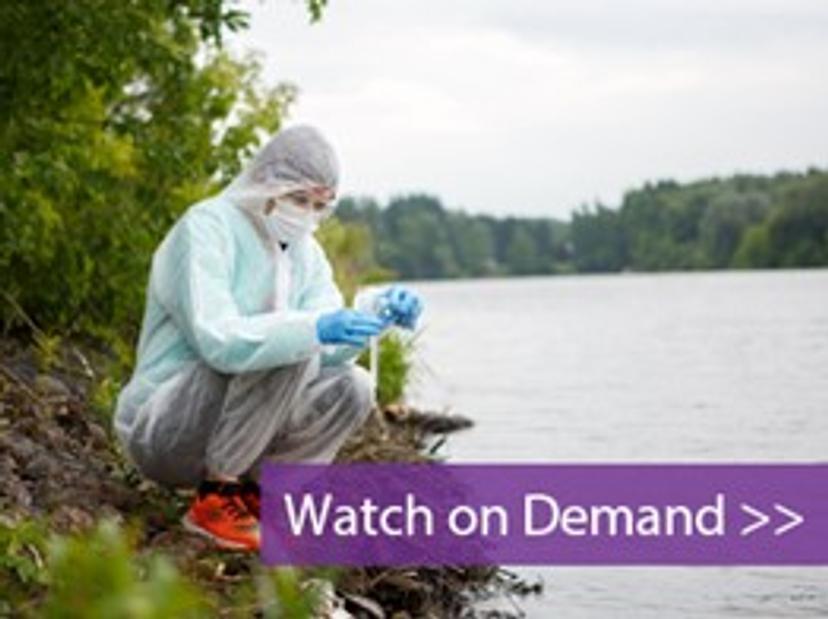
The highs and lows of PFAS testing: An expert panel discussion
PFAS testing is challenging due to the wide variety of PFAS compounds, low concentrations in environmental samples, complex sample matrices, and evolving regulatory requirements, necessitating specialized analytical methods and stringent quality control measures. Watch this webinar to gain insights from a panel of PFAS experts from the food and environmental testing fields about the challenges, best practices, solutions, and future directions in analyzing these persistent chemicals. The experts cover the global implications of PFAS testing, evolving regulatory requirements, and share their own experiences.
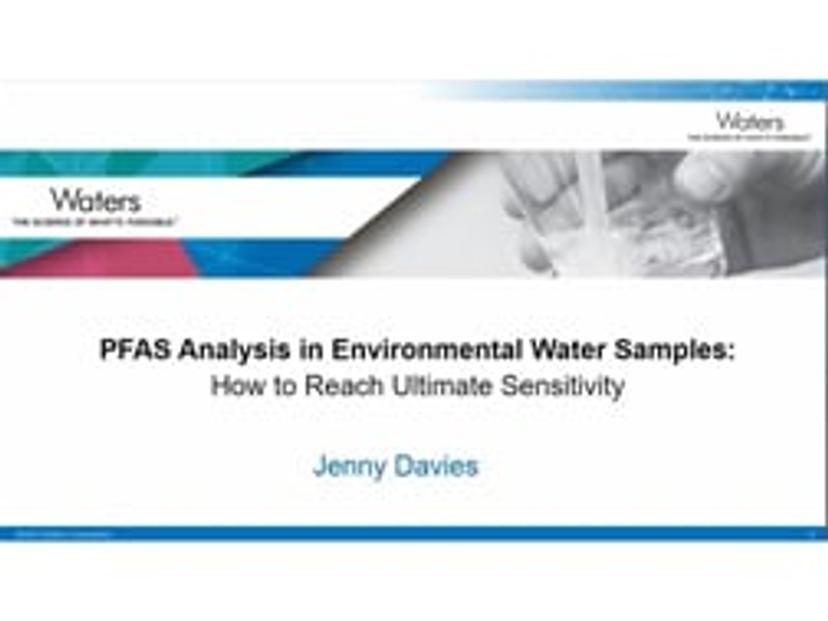
PFAS analysis in environmental water samples: How to reach ultimate sensitivity
PFAS compounds are often present in very low concentrations in environmental water samples but trace amounts still pose health and environmental risk. Therefore, to accurately monitor and evaluate PFAS contamination in water sources it is important to employ analytical techniques that are sensitive enough to detect even the smallest amounts. In this video, Jenny Davies from Waters Corporation, explains how to reach ultimate sensitivity when analyzing PFAS in environmental water samples.
Latest state-of-the-art technology enhances PFAS analysis
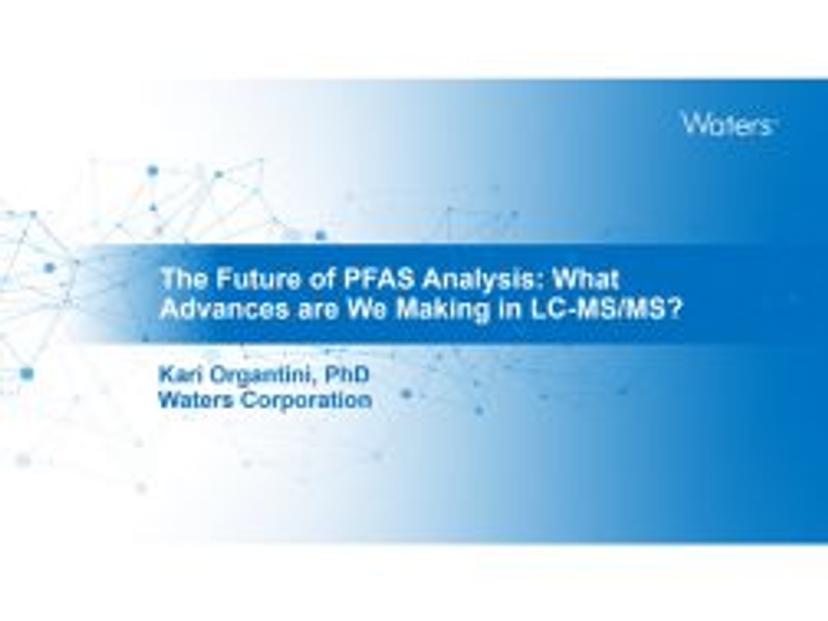
The future of PFAS analysis: What advances are we making in LC-MS/MS?
LC-MS/MS is a powerful analytical technique widely used for the analysis of PFAS thanks to its high sensitivity, selectivity, and ability to quantify multiple PFAS compounds simultaneously. As new advanced LC-MS/MS technology emerges, the ability to detect PFAS contamination will improve, enabling better environmental monitoring and protection of human health. In this video, Kari Organtini from Waters Corporation, discusses the future of PFAS analysis and explores the advancements being made in LC-MS/MS. .
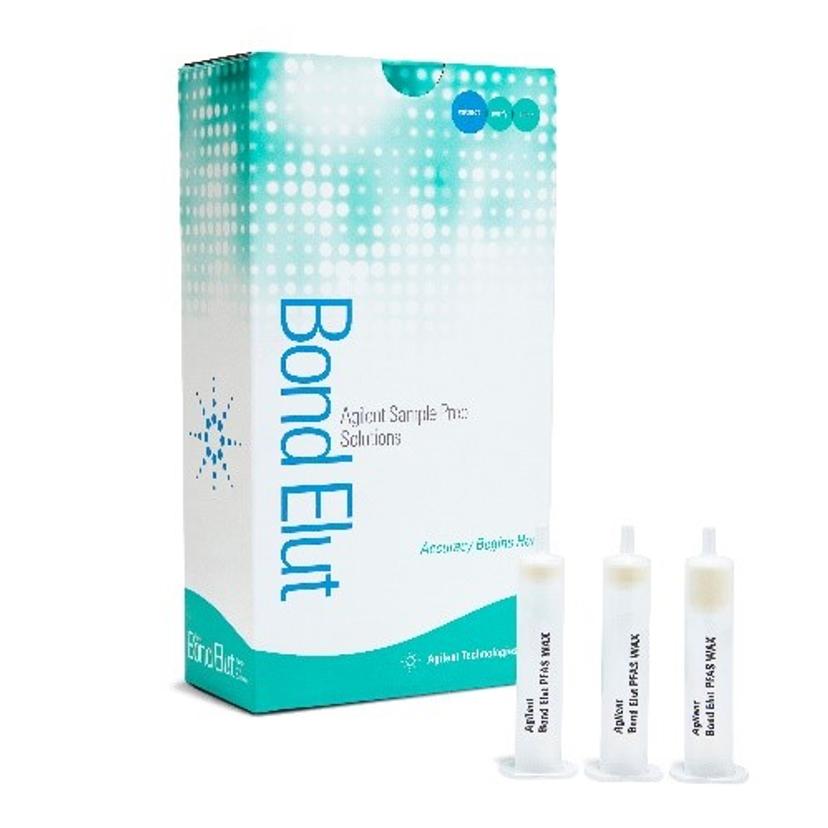
Agilent announces full workflow for US EPA method 1633 for targeted PFAS analysis
The United States Environmental Protection Agency (EPA) Method 1633 (3rd Draft) is an analytical technique used for the analysis of PFAS in wastewater and soil samples. The method outlines procedures for the identification and quantification of 40 different PFAS compounds and provides guidelines for sample preparation, analysis, and data reporting, aiming to standardize PFAS analysis across laboratories and ensure accurate results. Discover Agilent Technologies’ complete workflow solution for targeted analysis of PFAS using the EPA Method 1633, which includes the Agilent 6495 Triple Quadrupole LC/MS system, along with PFAS-specific consumables such as the Bond Elut PFAS WAX Solid Phase Extraction (SPE) Cartridges.

